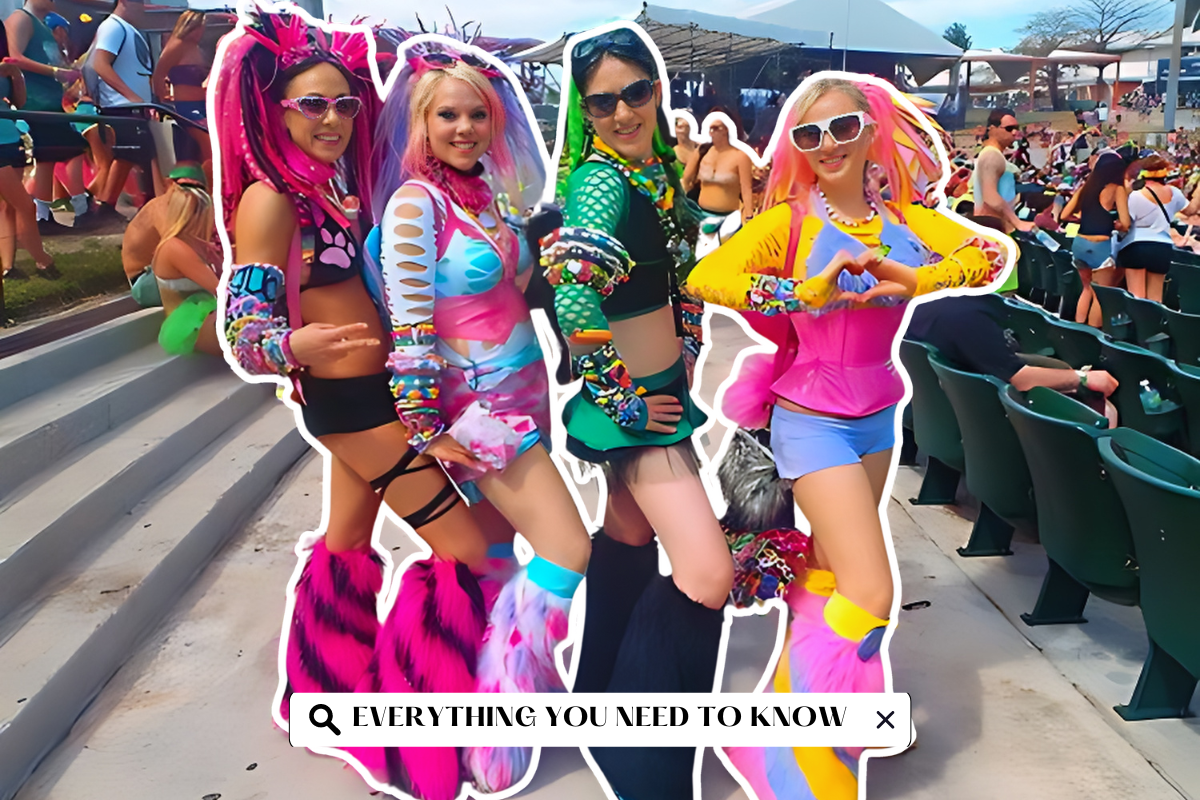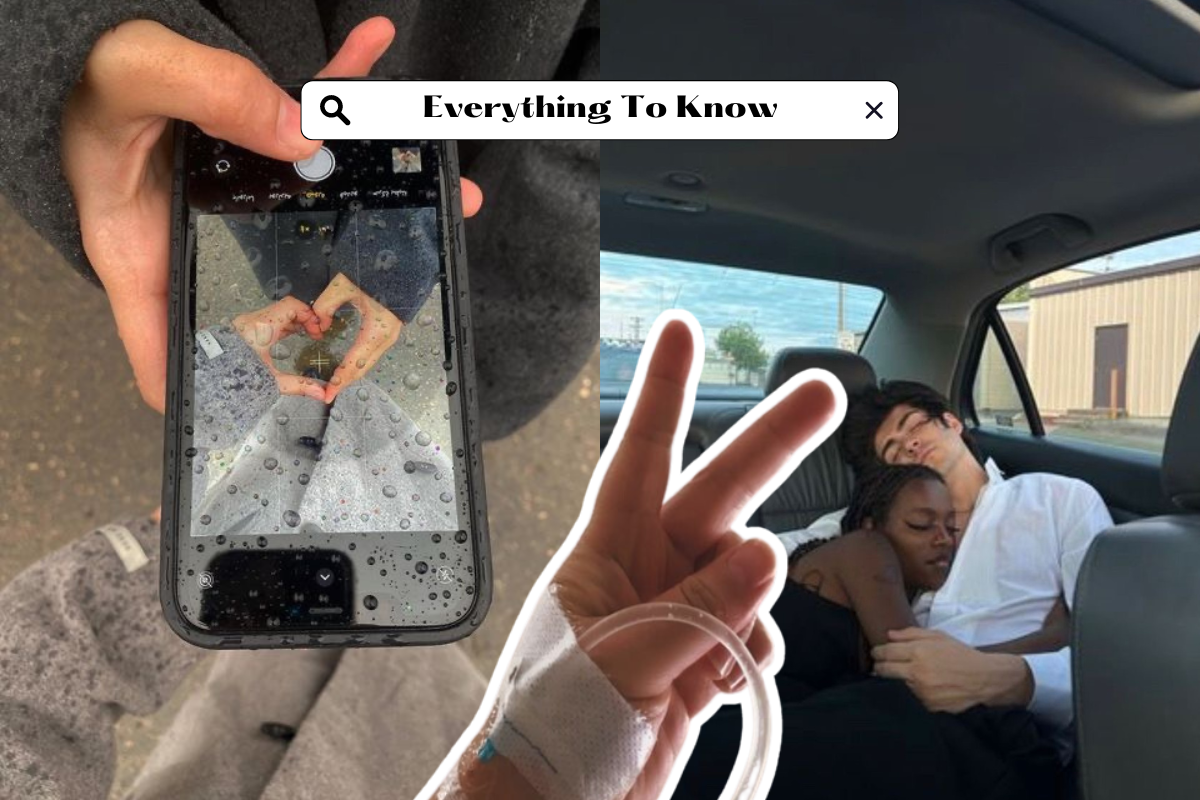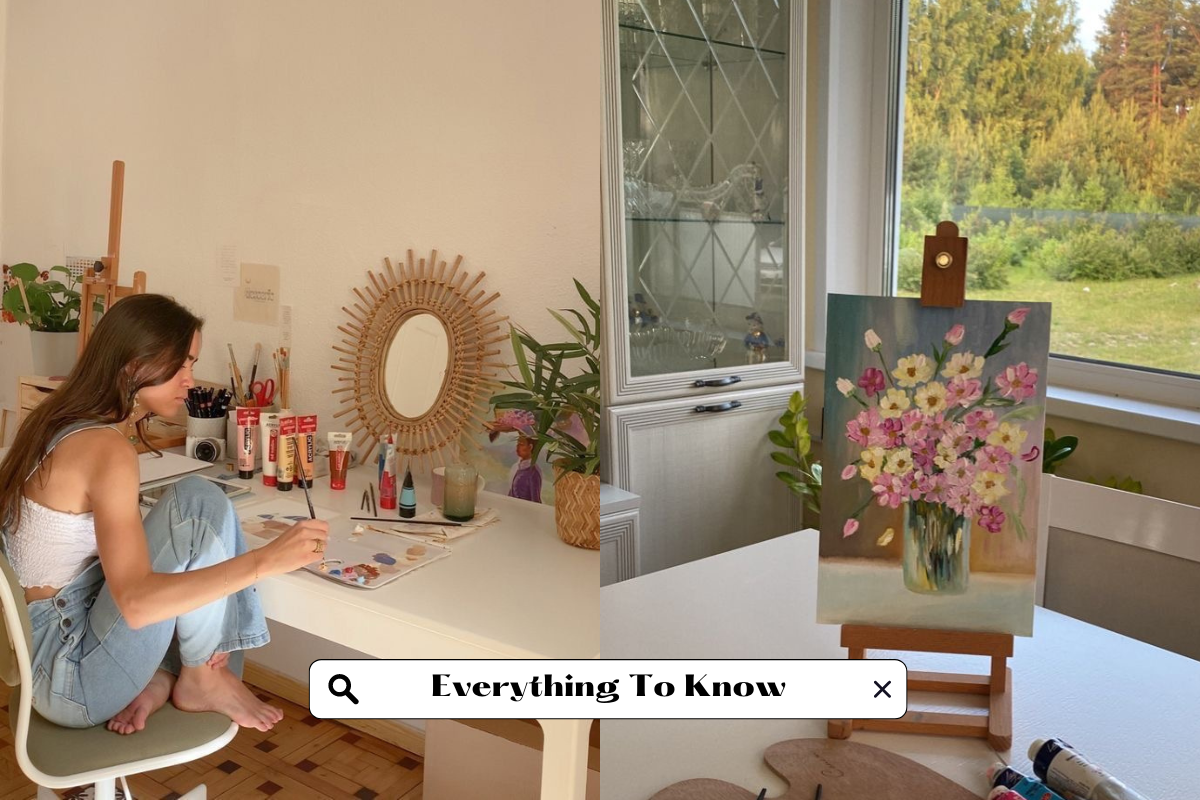90s rave fashion wasn’t just about the clothes — it was a movement of freedom, community, and self-expression that came alive through bold, colorful style. From oversized rave clothes to bra tops and neon booty shorts, the looks of this era created a style legacy that still inspires rave apparel and EDM outfits today.
If you want to learn about 90s rave fashion for women, this guide is for you. It has all the information you need. If you’re just curious about the culture, you will find useful details here too.
History of Raves and the Evolution of 90s Rave Fashion
Raves began as underground parties in the late 80s and exploded into mainstream culture in the 90s. Fueled by house, techno, and electronic music festivals, these all-night events needed a uniform: outfits that were loud, comfortable, and rebellious.
90s rave fashion mixed sportswear, DIY looks, and futuristic vibes. Think oversized rave clothes, neon accessories, and bold rave wear designed to stand out in dark warehouses or under flashing strobe lights.
90s Rave Culture: How Music and Vibes Shaped Rave Fashion
The energy of 90s raves shaped how people dressed. Fashion wasn’t just about looking good — it was about feeling free, connecting with others, and embracing the playful side of life.
Bright colors symbolized positivity, while reflective rave apparel and glow sticks lit up dance floors. Many rave outfits leaned on edm outfits styles we still see today: crop tops, cargo pants, and funky sneakers made for moving all night.
For women especially, 90s rave fashion women’s trends emphasized both comfort and sex appeal — pairing bra tops with baggy pants or rave dresses with chunky shoes.
Essential 90s Rave Fashion Pieces
Building a rave look in the 90s meant balancing comfort, boldness, and fun. These were the must-have rave fashion staples:
Bra Tops and Rave Dresses
From shiny metallic bra tops to playful slip rave dresses, these pieces became staples for women in 90s rave fashion. They were lightweight, breathable, and perfect for dancing all night under flashing lights. Bra tops often paired with baggy pants or skirts, while rave dresses added a more flirty, feminine edge without sacrificing comfort.
Booty Shorts and Bold Rave Wear
Neon booty shorts and patterned leggings were everywhere at raves, giving partygoers a way to show off both personality and confidence. These bold pieces reflected the wild, carefree energy of rave culture and paired easily with crop tops or oversized hoodies. Bright colors and unique prints made every outfit stand out in the crowd, turning rave wear into a personal style statement.
Neon and Oversized Rave Clothes
Baggy pants, oversized tees, and colorful tracksuits kept ravers comfortable while still on-trend. The loose fit made it easy to move and dance, while neon details and glow-in-the-dark jewelry made the outfits pop under blacklights. This combination of relaxed silhouettes and eye-catching colors defined much of 90s rave fashion, striking the perfect balance between comfort and self-expression.
90s Rave Fashion Women’s Icons Who Defined the Look
The 90s gave us unforgettable rave fashion icons who shaped not only the rave scene but also mainstream fashion. Gwen Stefani stood out with her mix of punk energy and rave wear — pairing crop tops, cargo pants, and bindis with bold hairstyles. She made bra tops and baggy rave clothes look effortlessly cool on stage and in music videos.
The Spice Girls brought playful, colorful energy to the 90s rave fashion women’s scene. Each member had a distinct style, from Baby Spice’s cute rave dresses to Sporty Spice’s athletic-inspired rave apparel, proving that rave outfits could be fun, feminine, and versatile.
Other artists like Aaliyah and Missy Elliott influenced rave fashion by embracing oversized rave clothes, sporty chic tracksuits, and futuristic looks that blended seamlessly into rave culture. Their fearless approach showed how rave outfits could move between streetwear, music festivals, and everyday fashion.
Together, these women proved that 90s rave fashion wasn’t just a passing trend — it was a cultural statement that merged individuality, music, and style.
How to Assemble a Rave Outfit Inspired by 90s Rave Fashion
Want to channel that 90s rave vibe today? Here’s how to put together the perfect outfit:
- Start with a statement piece — a bra top, rave dress, or neon booty shorts.
- Layer for comfort — oversized rave clothes like baggy pants or hoodies keep it practical.
- Add playful accessories — glow sticks, visors, and funky sunglasses.
- Mix in modern rave apparel — today’s EDM outfits give you breathable fabrics and bold prints that carry on the 90s rave tradition.
The key is self-expression — your rave outfit should feel like an extension of your personality.
Final Thoughts on the 90s Rave Fashion Today
90s rave fashion left a permanent mark on rave culture. What started as underground rave clothes became mainstream inspiration for music festivals, streetwear, and today’s rave wear trends.
From bra tops and rave dresses to oversized rave apparel, the fashion of the 90s continues to influence EDM outfits and inspire new generations. If you’re building a rave outfit today, you’re not just dressing for a party — you’re tapping into a vibrant cultural history that celebrated freedom, creativity, and community.






